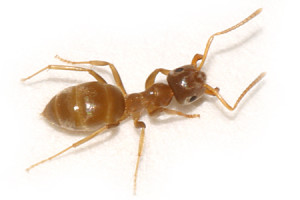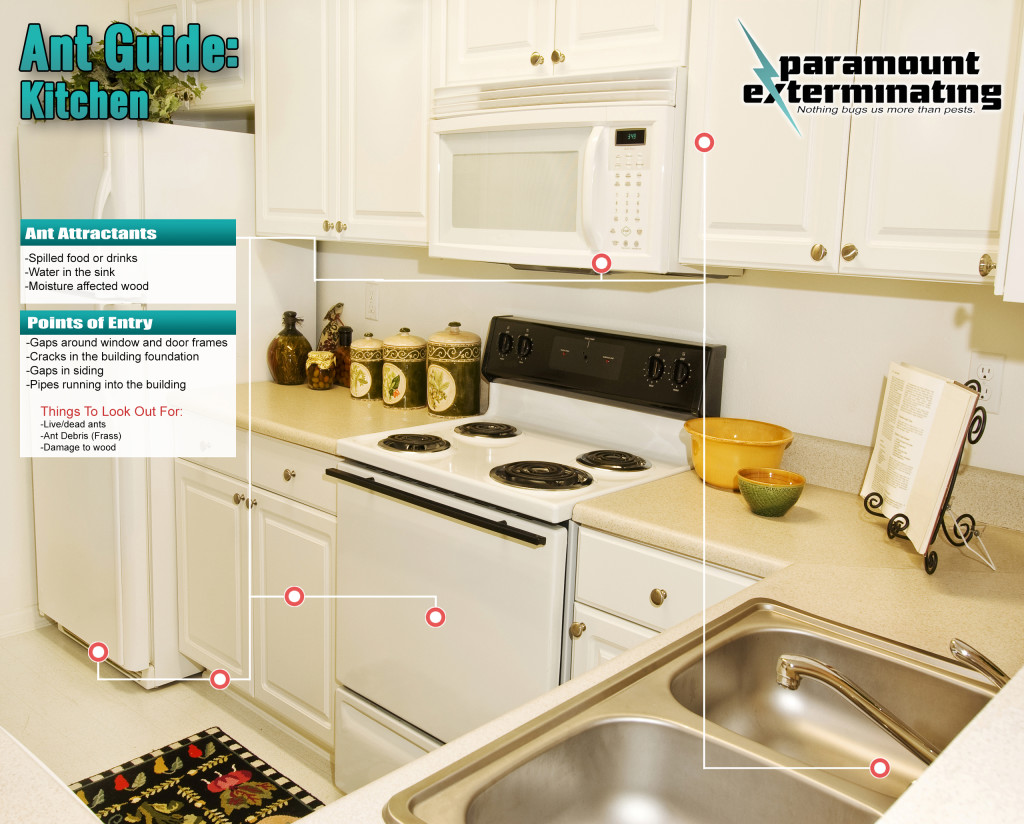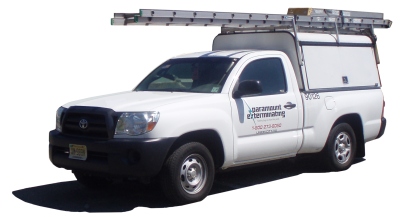ANTS
Ants are normally an outdoor nuisance, but when they come inside they can create a huge problem. Stop ants in their tracks, fast! Let us help you keep them where they belong!
STOPPING ANTS IN THEIR TRACKS
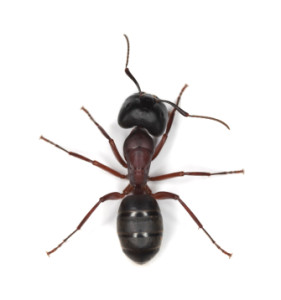 Complete ant control – Your technician is your ant expert. They will assess the problem, create a treatment program, and perform the initial treatment. Spraying, baiting, and trapping methods are all applied based on what the technician finds during your inspection.
Complete ant control – Your technician is your ant expert. They will assess the problem, create a treatment program, and perform the initial treatment. Spraying, baiting, and trapping methods are all applied based on what the technician finds during your inspection.- Long-term Protection – Your technician will perform an exterior treatment along the perimeter of your home to keep ants and other pests out.
- Maintaining pressure – We schedule you for follow up visit 1-2 weeks after your initial service so that your technician can assess the treatment program retreat areas as needed.
- Prevention for the future – Your technician will find any entry points, food/water sources that may attract them, and educate you on how to prevent future problems.
HOW DOES PARAMOUNT GET RID OF ANTS?
STEP 1: INSPECTION AND TREATMENT
Your technician will assess the problem and perform the initial treatment. Spraying, baiting, and trapping methods are all applied based on what the technician finds during your inspection. This service generally takes 30 – 45 minutes and will knock out the majority of your ant activity. Expect to see what appears to be an increase in ant activity, as this treatment forces them out of their hiding places and causes them to interact with our materials for the fastest control possible.
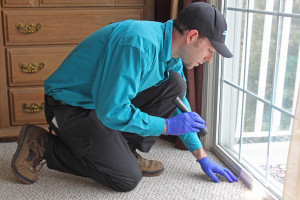
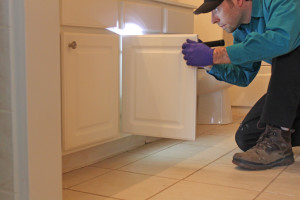
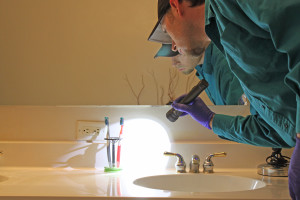
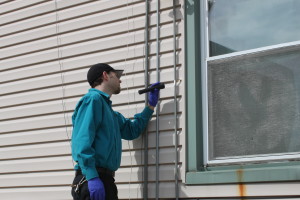
STEP 2: FOLLOW-UP TREATMENT AND REINSPECTION
We schedule you for follow up visit 1-2 weeks after your initial service so that your technician can assess the treatment program, retreat problem areas, and replace controls as needed. Your technician will ask you if you have seen more ant activity and will ask you to pin point affected areas so they can be treated aggressively to achieve the quickest results possible. This service generally take 20-30 minutes and ensures that the problem will not return.
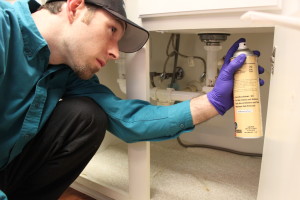
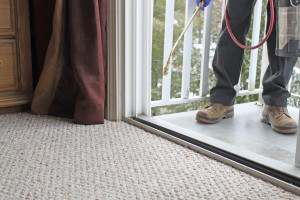

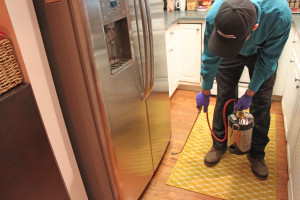
STEP 3: SECOND FOLLOW-UP TREATMENT AND REINSPECTION (Optional)
While we handle most ant problems in the first two visits, sometimes additional follow-up services are needed to take care of more advanced problems. Your technician will discuss this with you if they feel its necessary. Additional treatment measures like fogging are available for large spaces and aggressive infestations. The time allotted for second follow-up services varies depending on the severity of the problem.
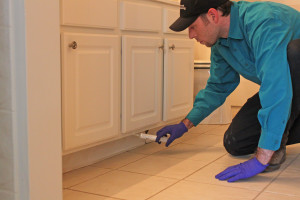
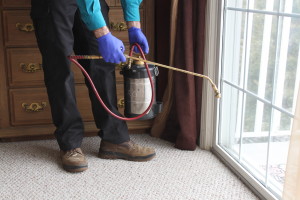
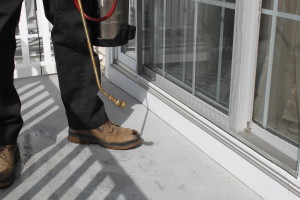
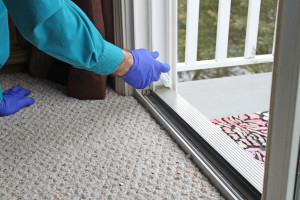
LONG-TERM PROTECTION PLANS
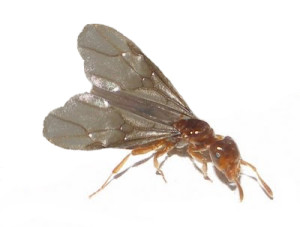 Residual treatments – Takes care of ants and other pests too, and lasts well beyond your treatment date to ensure continued results.
Residual treatments – Takes care of ants and other pests too, and lasts well beyond your treatment date to ensure continued results.- Pest activity monitoring – Pest monitors that will trap ants and other small pests are placed in areas that are prone to problems. They are replaced on each service as needed.
- No cost emergency visits – Should ant issues arise during your ant treatment program, we will be out to retreat at no cost to you.
FREE ESTIMATES – ZERO OBLIGATIONS
ANT FACTS
Pest Entry: Ants are usually a problem in the spring and summer months, making their way into homes through small cracks in window sills and doors that most people don’t even know are there. When ants do make their way inside, they are usually searching for places with food and water like kitchens or pantries. Once they have found a food source, Ants will often leave scent trails that contain pheromones to lead other ants to the food source they’ve located.
Environment: Ants can create nests in a variety of places including lawns, tree stumps, wall voids, and inside the home. Nest locations often vary depending on the particular species.
Reproduction: Can number up to 300,000 to 500,000 and whole colonies can uproot and relocate quickly when threatened. A colony can live a relatively long lifetime. Worker ants may live seven years and the queen may live as long as 15 years.
Health/Damage Concerns: Ants can contaminate food products in the home and can certainly be a hassle when cooking or preparing food outdoors.
Home Remedies: Home remedies only work temporarily, since contact sprays only kill the ants that you actually see. Most of the time these sprays will not reach the nest, causing them to come back time after time.
WHAT TYPE OF ANT IS IT?
Name: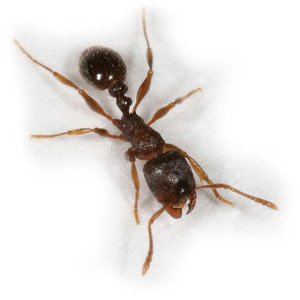
Tetramorium caespitum
Appearance: The pavement ant is dark brown to black in color and averages a length of 2.5 – 4mm long. It has grooves along its head and thorax, and has two nodes on the petiole. Often seen on sidewalks emerging from in between cracks in the pavement during the spring and summer.
Habit: Pavement ants are well known because they are often seen during the summer making their home underneath slabs of concrete on sidewalks. They will often remove the sand that is between concrete blocks to vent their nests, leaving a typical ant hill that is so often seen on sidewalks during this time of year. Pavement ants tend to be aggressive to other ants and can be seen in early spring attacking other colonies to expand their territory.
Diet: Scavenger diet; eats everything from other insects to bread, meat, sweets and fruit.
Reproduction: Like most ants, Pavement ant colonies operate on a “Caste” system. This means that different groups of ants within the colony will have specific jobs, some to mate and reproduce, others to help feed and protect the colony. Alates, a group containing male and female reproductives, have nuptial flights where they will mate. The female will then find a nesting location, dig a founding chamber, and lay her eggs. Emergence of these ants is often seen during the early spring and summer months.
Camponotus
Appearance: Easily distinguishable due to their size, carpenter ants are 1/4 to 1/2 inches long and are one of the largest ants in New Jersey. They are commonly black in color and often have large mandibles.
Habit: Given their name due to the damage they cause to homes and other structures, carpenter ants cut “galleries” in wood to create nests. They do not feed on wood like termites, but will use moist or decaying wood as nesting and breeding sights. Thriving both indoor and outdoor all year-round, they will often create nests outdoors while still traveling into homes to forage for food. The chewed up wood particles that they leave behind called “frass” are an indicator that carpenter ants may be damaging the wood in that area.
Diet: Carpenter ants prefer to feed on human food like sweets and meat products, but will also consume other insects.
Reproduction: Carpenter ant queens will commonly lay 20 to 30 eggs per year and can live up to twenty years, with workers living up to seven. Carpenter ants can make their homes in porches, windowsills, roofs, and almost any wood that is in contact with the soil. To effectively eliminate them, their nest must first be found. This can be done by watching their activity at night when they are most active and following them to where they are entering the home or structure. Controlling moisture problems and replacing damp wood is also recommended when treating or attempting to prevent carpenter ants.
Lasius interjectus
Traits and Appearance: Averaging from ¼ inch to ½ inches in length, and entirely yellow in color. The common name, “Citronella Ant”, comes from the citrus odor that is released when a worker ant is stepped on. Citronella ant swarmers have black wings and are often seen during the mid to late summer. Other common names for these ants are “moisture ants” and “yellow ants”.
Habit and Habitat: Citronella ants nest in soil and are most often found outdoors making nests under rocks, logs, and concrete slabs. They excavate tunnels underneath these objects and create soil mounds around their exit tubes. They require high moisture levels to survive and are usually found in homes with water damage or in areas of high humidity.
Diet: Citronella ants feed on the honeydew that other insects acquire from feeding on plant roots.
Reproduction: Citronella ants swarm in mid to late summer looking to establish new colonies.
 General Information: Winged ants are commonly seen swarming during the the spring and summer months and are usually seen after a heavy rainfall.
General Information: Winged ants are commonly seen swarming during the the spring and summer months and are usually seen after a heavy rainfall.
Traits and Appearance: Winged ants can be identified by their elbowed antennae and tapered abdomen. They come in various colors and sizes dependent on the species. Winged ants are are often confused for termite swarmers, but can be distinguished by their elbowed antenna and tapered abdomen.
Habit and Habitat: They are often seen during the summer months after heavy rainfall. They can enter the home by swarming near it or creating a nest in a wall void or underneath the concrete slab.
Reproduction: Ant colonies consist of at least one egg producing queen, workers, and winged reproductives. Winged ants are generally the reproductive males and females that will travel off to mate and create new colonies.
ANT LOCATION GUIDE
– Find out where to look for Ants –
Why Families and Businesses Choose Paramount
- Faster Service – Get your services scheduled quickly and on YOUR time. No one wants to wait weeks for treatment, and we get that.
- Local and Reliable – We have pest control technicians in Union City, Jersey City, Hoboken, Weehawken, North Bergen, and Hudson County everyday to assist our customers at a moments notice!
- More Efficient – We get things done right the first time, saving you time, money, and frustration.
- Better Tools – Our technicians only use the best products available on the professional market making treatments more effective and longer lasting.
- Better variety of treatment methods – Including green treatments and baiting programs.
- More Experience – We’ve been defeating all types of pests since 1930, and have the most experienced technicians in the industry.
Click HERE For A Free Estimate!
With a free estimate from one of our experienced professionals, you learn about all of the benefits of Paramount’s services. We will work with you to design a specialized program specific to your needs! Call or click for a free estimate.


